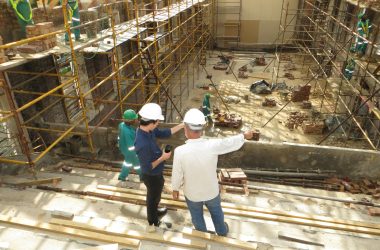Last Updated on: 22nd November 2023, 05:11 am
There are constantly new developments to keep up with relating to the Building Safety Act 2022, as industry-overhauling changes are underway to make buildings in England safer.
The latest change came into effect on last month, which was the deadline for developers or owners of ‘higher-risk’ buildings to register with the new Building Safety Regulator (BSR). This applies to buildings that are at least 18m or 7 storeys high and have at least 2 residential units.
Failing to register currently occupied higher-risk buildings by this date, or to register higher-risk buildings under development that are due to be occupied after this date, is an illegal offence that could result in fines and/or imprisonment for the responsible parties.
This means that now, all new buildings that are classified as higher-risk must register with the BSR before any units within them can be legally occupied.
Registering with the BSR for approval
These amendments to previous regulations and the introduction of new regimes are implementing stricter oversight for building control bodies – improving standards, competency, and accountability across the sector as efficiently as possible.
Now the deadline has passed, the Building Safety Regulator (BSR) is the sole authority when it comes to higher-risk buildings in England. Developers of such buildings can no longer choose to go to a local authority or private inspector of their choice.
Before work can begin on any new higher-risk building, developers are required to submit a design application to the BSR. The regulator will then thoroughly assess the building design to ensure it complies with not just building regulations, but also the competence requirements for control management and duty holders.
If the BSR grants approval, works can commence, but with site inspections conducted throughout and a ‘golden thread’ of key information maintained.
Once the BSR carries out a final inspection and is satisfied, the regulator will issue a completion certificate, after which the completed structure can be registered as a higher-risk building.
Of course, there is an ongoing transitional period for all of this, as previously approved inspectors will now have to qualify as registered Building Control approvers under the BSR.
Keeping higher-risk buildings safe
The new roles and responsibilities implemented under the Building Safety Act should strengthen the quality of construction and enhance record-keeping and information trails to ensure that qualified professionals are appointed at every level and held accountable.
This protects both developers and leaseholders of multi-storey residential buildings if defects become apparent, as their causes should be more easily traceable.
As the implications of the Building Safety Act for the construction and property finance industries continue to unfold, it’s just as important for developers to make sure they work with certified organisations to prevent defective work and provide financial protection.
For example, it’s essential for a builder to have the appropriate home builders’ insurance set up before planned work even begins to improve their chances of the BSR approving their application.
Having a warranty against defective construction work and a building signed off by the BSR should also make the process of finding leaseholders to occupy it run far more smoothly.









